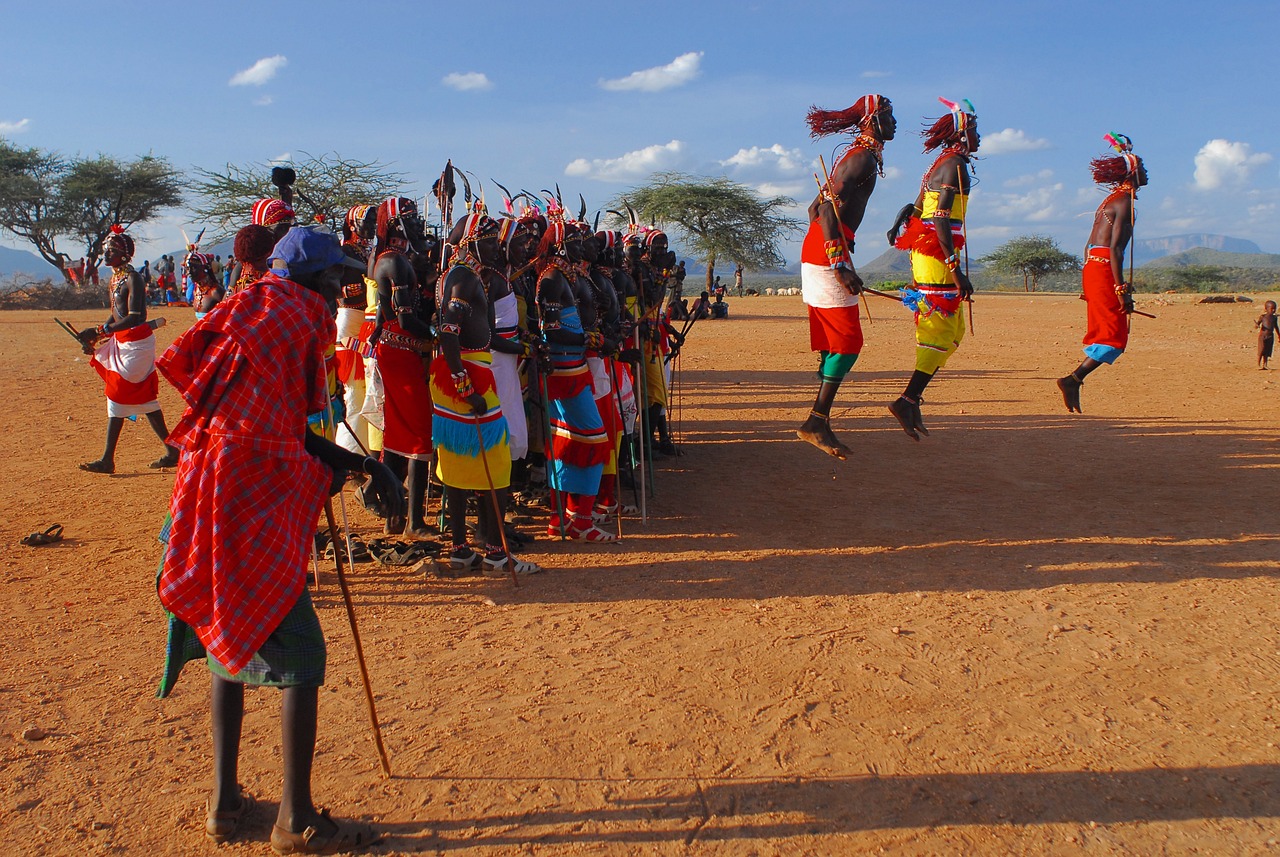Introduction
Kenya is an East African country located on the eastern coast of Africa. It is a culturally diverse country, with over 40 different ethnic groups. Kenya has a long and rich cultural history, with a variety of customs and traditions that have been passed down through generations. From traditional clothing to music and dance, religion, and cuisine, the culture of Kenya is full of diversity and flavor. In this article, we’ll explore the various aspects of Kenyan culture, including traditional clothing, religion, music and dance, and cuisine.
Traditional Clothing
Traditional clothing in Kenya is a reflection of the country’s diverse cultural heritage. Different tribes have unique styles of dress, often characterized by bright colors and intricate designs. The most common garment worn by both men and women is the kanga, a brightly colored piece of cloth with a Swahili proverb printed on it. Men often wear a kikoi, a traditional wrap-around cloth, as well as a kanzu, a long white robe. Women usually wear a bui-bui, a long black dress with a headscarf. Another traditional item of clothing is the gomesi, a brightly colored wraparound skirt worn by women. In some parts of Kenya, traditional clothing is still worn on special occasions such as weddings or religious festivals. Women often wear elaborate headdresses and jewelry to accessorize their traditional outfits. Men may wear a variety of hats, such as a kofia, a brimless cap, or a fez, a red felt hat with a tassel. Traditional clothing is an important part of Kenyan culture and is often used to identify a person’s tribe or ethnic group. It is also a way to express pride in one’s heritage and culture.
Religion
Religion plays an important role in Kenyan culture. The majority of the population is Christian, with Roman Catholicism being the largest denomination. Other religions practiced in Kenya include Islam, Hinduism, and traditional African religions. Christianity has a long history in Kenya, with the first Christian missionaries arriving in the 19th century. Today, Christianity is an integral part of Kenyan culture, with many churches, schools, and other religious institutions throughout the country. Islam is the second-largest religion in Kenya, with approximately 11% of the population practicing the religion.
The majority of Kenyan Muslims are Sunni, and the religion has a long history in the region. Islam was first introduced to Kenya in the 8th century, and today there are numerous mosques and Islamic schools throughout the country. Hinduism is the third-largest religion in Kenya, with approximately 1% of the population practicing the religion. The majority of Kenyan Hindus are immigrants from India, with the first Hindu temple in the country built in the late 19th century.
Traditional African religions are also practiced in Kenya. These religions are based on animism, ancestor worship, and other spiritual beliefs. These religions are practiced by a small minority of the population, but they still play an important role in Kenyan culture. Religion is an important part of Kenyan culture, with many different religions playing a role in the country’s history and culture. Christianity, Islam, Hinduism, and traditional African religions are all practiced in Kenya, and each religion has a unique history and influence on the culture of the country.
Music and Dance
Music and dance are integral parts of Kenyan culture. Traditional music and dance are often used to celebrate special occasions, such as weddings, births, and important holidays. Music and dance are also used to express emotions, such as joy, sorrow, and love. Traditional Kenyan music is largely vocal-based, often accompanied by drums and other percussion instruments. The most popular traditional Kenyan music genres include benga, chakacha, and kapuka.
Benga is a style of music that originated in the early 20th century and is characterized by a fast tempo and complex rhythms.
Chakacha is a type of dance music that is often accompanied by hand clapping and foot stomping.
Kapuka is a popular style of music that is characterized by its fast tempo and catchy rhythms. Traditional Kenyan dance is also an important part of the culture.
Traditional dances are often performed to celebrate special occasions or to express emotions. Popular traditional dances include the adungu, which is a type of circle dance performed by the Luo people of Kenya, and the ndombolo, which is a type of dance performed by the Kikuyu people of Kenya. Music and dance are integral parts of Kenyan culture, and they are used to celebrate special occasions, express emotions, and to bring people together. Traditional Kenyan music and dance are vibrant and exciting, and they are sure to bring a smile to anyone’s face.
Cuisine
Cuisine in Kenya is a reflection of the country’s diverse population, with many different cultural influences. The main staples of Kenyan cuisine are maize, beans, and other vegetables. Meat is also widely consumed, with beef, goat, and chicken being the most popular. Fish is also eaten in coastal areas. The most popular dishes in Kenya are ugali , Mukimo (a mix of mashed potatoes, maize, and peas), and nyama choma (grilled meat). Other popular dishes include pilau (a rice-based dish), chapati, and samosas (a savory pastry filled with vegetables). Kenya is also known for its tea and coffee, both of which are grown in the country.
Coffee is usually served as a strong, dark brew. Tea is often served with milk and sugar. Kenya’s cuisine is also heavily influenced by its neighbors, with dishes such as mandazi (a sweet, deep-fried doughnut), bhajia (a type of fritter), and samosa (a savory pastry filled with vegetables) being popular. Kenya also has a variety of street food, such as roasted maize, chapati, and grilled meat. This type of food is usually sold by vendors on the street and is usually inexpensive. Overall, Kenyan cuisine is a reflection of the country’s diverse population and cultural influences. There is something for everyone, from traditional dishes to street food.


Hi, this is a comment.
To get started with moderating, editing, and deleting comments, please visit the Comments screen in the dashboard.
Commenter avatars come from Gravatar.